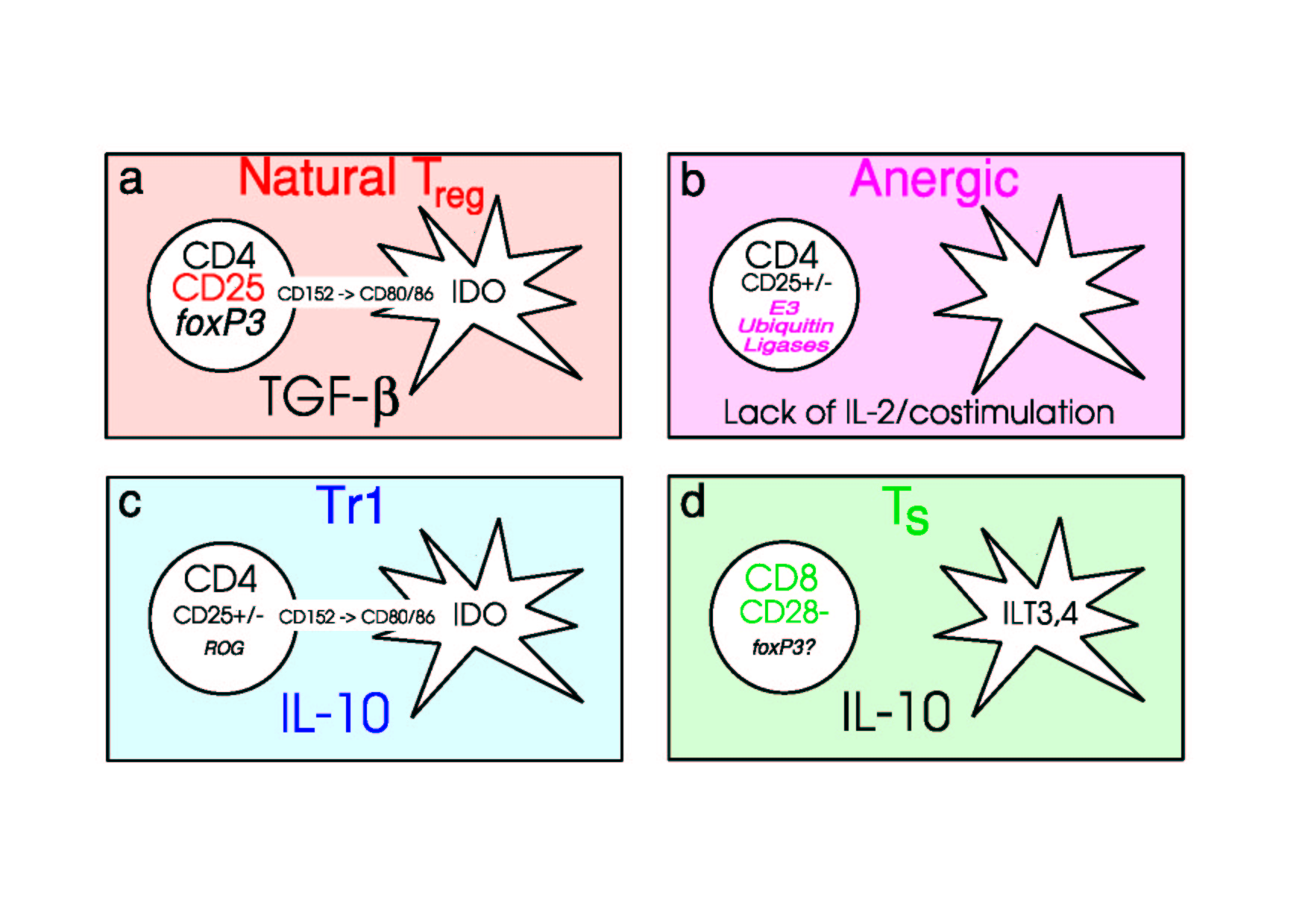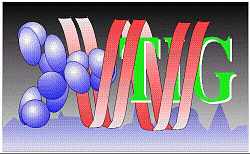
Search within Therapeutic Immunology Group Web Site:
Different Types of Regulatory T Cells

Four of the major regulatory T cell subsets that have been described are depicted in the left of each panel (a-d) together with their appropriate antigen presenting cells on the right. (a) The “natural” regulatory T cells originally recognised by their constitutive expression of CD4 and CD25 are further defined by expression of the transcription factor foxP3 and surface CD152. Theirgeneration and some of their suppressive activity is dependent on TGF-beta, and it has been shown that they can induced IDO in appropriate DCs by CD152 mediated ligation of CD80/86. (b) Anergic CD4+ T cells generated by antigen stimulation in the absence of costimulation seem to be characterised by an intrinsic raising of their threshold for antigen stimulation, that may be maintained by expression of E3 ubiquitin ligases such as GRAIL, c-cbl and Itch. Anergic cells can act as regulatory T cells by competing at the sites of antigen presentation and adsorbing out stimulatory cytokines such as IL-2. (c) Tr1 cells represent an induced subset of CD4 helper T cells that are dependent on IL-10 for their differentiation and for some of their regulatory properties. They do not express foxP3 but may express markers associated with Th2 cells and repressor of GATA (ROG). Like natural Tregs, they express high levels of surface CD152 and can induce IDO and trypophan catabolism in appropriate DCs. (d) CD8+CD28- suppressor T (Ts) cells were first characterised in human, but have recently also been demonstrated in rodents. Like Tr1 cells, they are induced in the presence of IL-10, and IL-10 may be involved in the downregulation of dendritic cell costimulation and the upregulation of ILT-3 and ILT-4 (in human DC) that seem to play an important role in presenting antigen to tolerise further cohorts of T cells.

"Developing short-term treatments for long-term outcomes"
Related topics:
![]() Making mAbs in large (gram) amounts
Making mAbs in large (gram) amounts
Last Updated 28th May 2004 by Steve Cobbold